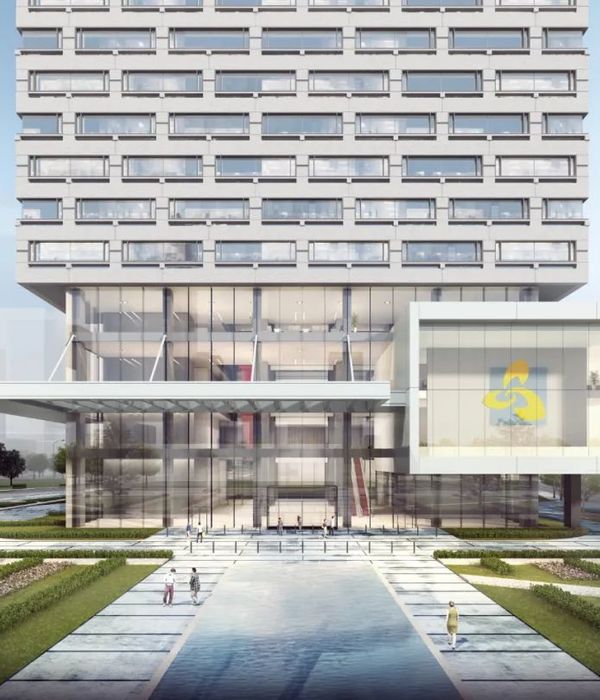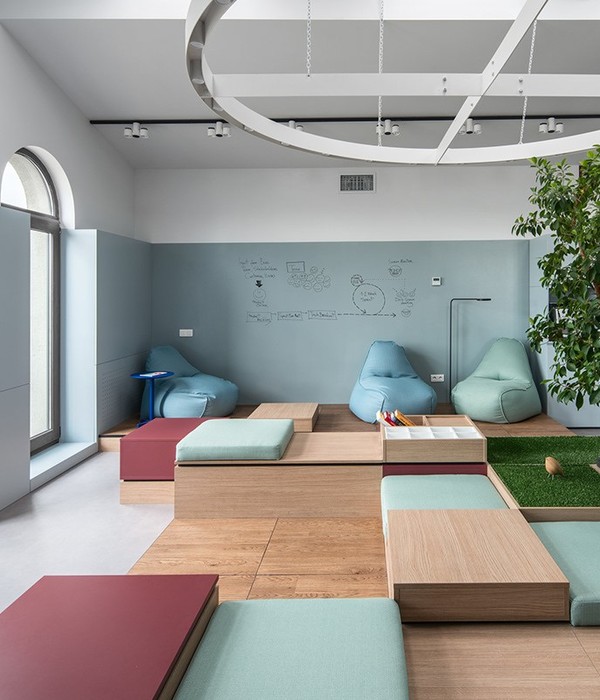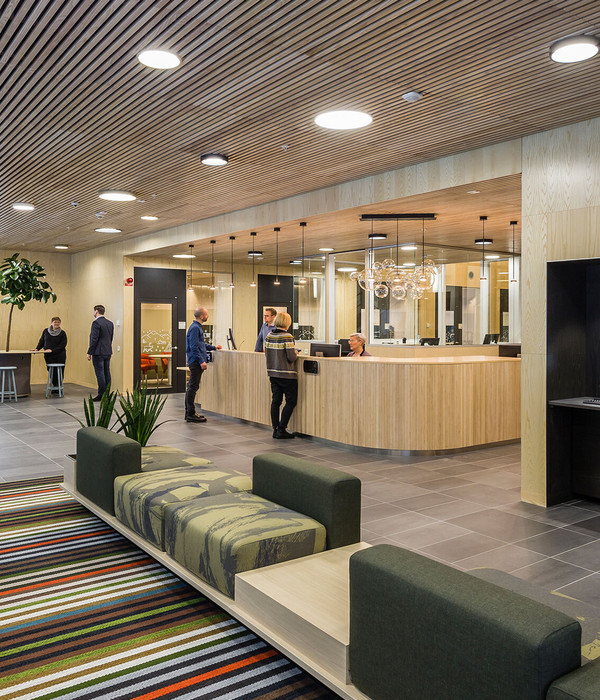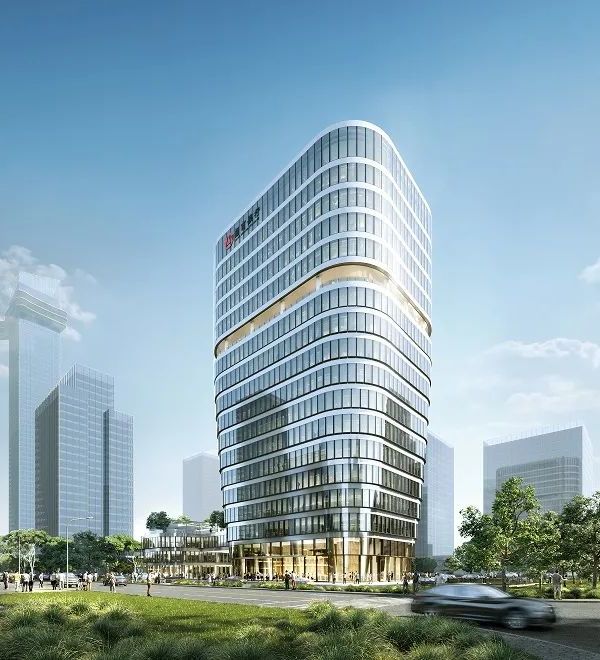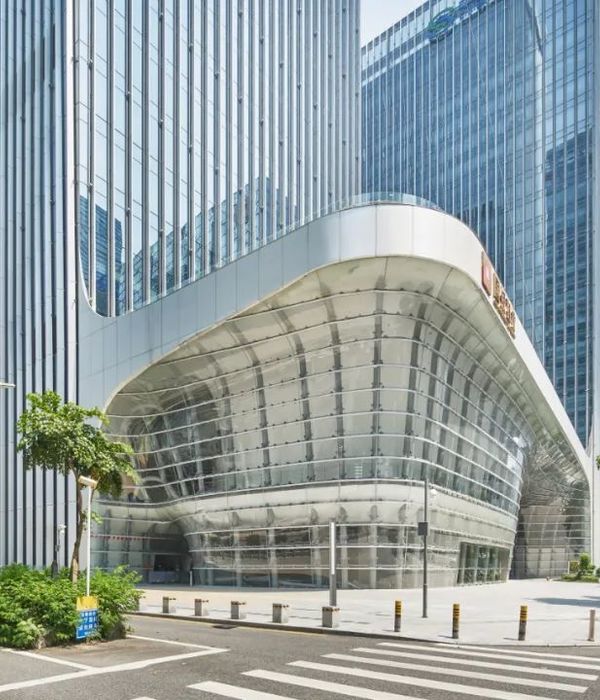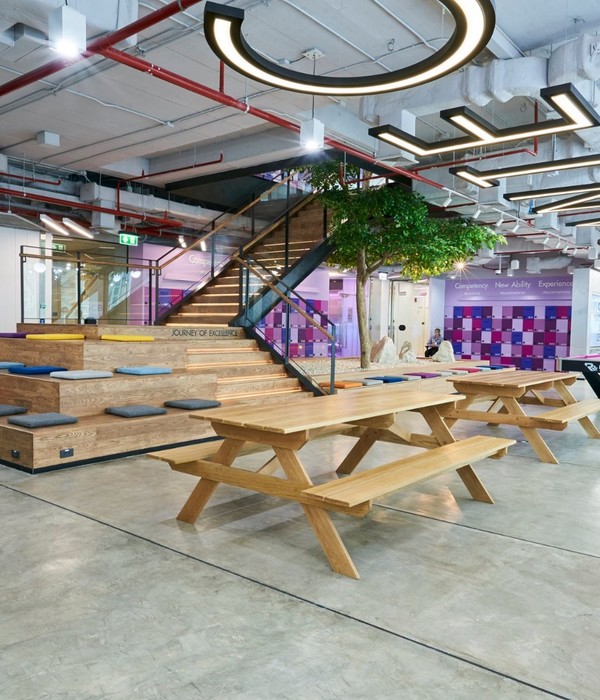来自
Snøhetta
.
Appreciation towards
Snøhetta
for providing the following description:
让全球震惊的911事件过去漫长也短暂的十三年后,影响依然深刻。2014年5月15日,美国总统奥巴马出席了911事件纪念博物馆的首展。5月21日,博物馆将对公共首次开放。
911纪念博物馆位于
National 9/11 Memorial 世贸双塔纪念广场
。作为纪念广场上唯一的建筑,它谦虚的立于地面之上,不影响广场的氛围,同时又以活力的有机形体向游客展示和开放。该文化机构旨在为游人提供舒适的环境,找到城市日常生活与纪念性之间的和谐平衡,自然的将游人带入精神纪念的范畴。
SNØHETTA’s design for the National September 11 Memorial
Museum Pavilion opens to the public
On May 15, 2014, President Obama will be present for the dedication of the National September 11 Memorial Museum & Pavilion at the World Trade Center site. The Pavilion and Museum will open to the public for the first time on May 21, 2014.
In 2004, SNØHETTA was commissioned to design the only building on the
memorial plaza
. In the years since, the program has changed several times, however it has remained a cultural facility dedicated to visitor comfort and orientation. The design for the building embodies a careful reaction to the horizontal character of the memorial plaza’s design, while also providing the area with a lively organic form that allows the visitor to imagine the site and city in a broader sense. According to Snøhetta’s Founding Partner, Craig Dykers, “Our desire is to allow visitors to find a place that is a naturally occurring threshold between the everyday life of the city and the uniquely spiritual quality of the Memorial. It is important that people physically engage with the building and feel that it helps lead them on to other areas of the site and other thoughts about their experiences there.”
设计探寻上下文脉的关联,希望承载过去历史的同时又饱含对未来的希望,成为一个不能忘记该事件的回忆地与重生梦想之地。博物馆拥有原来两座塔楼的某些特点。有高反光率的外表皮能够反映四季的变迁、倾斜、透明。具有反射性的造型鼓励游人接近、触碰、凝视。游人被吸引进入建筑后,会看到从被摧毁的双子塔中整理出的两根构造柱,然后人们需要通过阶梯往下走,在深入地下的过程中,通过与地面发生微妙的关系,产生身体和心理的过渡。此外馆内光线明亮,通风顺畅。
Snøhetta’s design approach has always been characterized by an exploration of context. The WTC Memorial site carries with it both the power of its history and a new hope for the future. It is a place that conveys the memories and dreams of people around the world who are affected by its presence without forgetting its intimate connection to the people of New York.
Certain characteristics of the Museum Pavilion will seem reminiscent of the original towers, while at other times these notions are only alluded to. The alternating reflective treatment of the façade will mirror the changing seasons, revealing the Pavilion’s differing qualities throughout the year. Inclined, reflective and transparent surfaces encourage people to walk up close, touch and gaze into the building. Once inside, visitors look out through the Pavilion’s atrium to see others peer in, and begin a physical and mental transition in the journey from above to below ground. Within the atrium, stand two structural columns rescued from the original towers. Although removed from their former location and function, they mark the site with their own profound and aesthetic gesture. The Pavilion’s light and airy materials allow daylight into the Museum below grade, commemorating the Pavilion’stenuous relationship with the ground, equal parts weightless and hopeful.
这座博物馆与广场上简练的水池与树林和谐并存,是一个融入场所的纪念馆。其低矮水平的几何造型,成为联系两个世界的桥梁:地上与地下、光明与黑暗、集体与个人。此外它也与道路车站和地铁联通。这个介于水平广场与垂直摩天大楼之间宛如宝石一样的存在,深深的激起游人的共鸣。
在广场,人们在
巨大的水池落泉
面前思考与回顾,在博物馆,人们则看到现在、未来、勇敢还有希望。
Complementing the power and simplicity of
the pools and the trees
, Snøhetta has designed a visually-accessible, unimposing, building which is fully integrated into the Memorial site. With its low, horizontal form and its uplifting geometry the Pavilion acts as a bridge between two worlds – between the Memorial and the Museum, the above and below ground, the light and dark, between collective and individual experiences. It also bridges over separate structures: the Path station, Museum and subway station below. Between vertical and horizontal extremes, it is a stepping stone between skyscrapers and the plaza. The Pavilion’s jewel-like, striped façade was developed in collaboration with the Client to allow the building to have a strong resonance for the visitor as well as providing visual and architectural connection to the surrounding urban environment. The flat plane of the Memorial Plaza is pierced by the glass Atrium of the Pavilion, which allows visitors to enter the below-grade Museum and bring with them sunlight from above.
The name of the Memorial Plaza is “Reflecting Absence.” As visitors cross the
Plaza
and approach the perimeter of the
pools
their gaze drops to watch the water cascading into the main pools, then flowing further over the second rim into the inner void. It is a physical reflection of the monumental absence created by the tragic events of September 11. By contrast, Snøhetta’s Pavilion reflects presence: the present moment, the day, the time, the weather, the trees, the surrounding buildings, and especially all the visitors present at the Memorial. While they look down into the Memorial fountains to contemplate and pay respect to the past, they look straight ahead and up at the Pavilion to reflect on the present and the future, bravely and with hope.
Design Team:
SNØHETTA – Architecture, Landscape & Interior Architecture Adamson Associates – Architect of Record and Buro Happold – SMEP
Size: Gross Floor Area: 50,000 square feet, 3 floors, Height: 75 feet max.
Program: Ticketing, Lobbies, Auditorium, Atrium, Family Room, Amenities,
Exhibition Material Choices:
Exterior: Treated Stainless Steel Panels and Insulated Glass
Interior: Ash Finger Parquet Floor, Ash Ceiling Panels; Ash Wall Panels;
Floors: Polished Concrete,
Walls: Resin panels
▼1F
▼2F
{{item.text_origin}}

